Sprouts have a high nutritional value and now you can discover how to exploit this value for yourself. Even if you’ve tried them before, you may not have been aware of just how good sprouts are for your health.
Sprouts are shoots that come out of various fruits and enrich your diet with a lot of vitamins and nutrients in hefty quantities. They are the most balanced and healthy foods in the alimentary chain. Some are crisp, others soft, some have a light flavor and others are spicier. Soft sprouts are suitable for salads and sandwiches because they can be consumed raw, while harder sprouts can be cooked and give a distinct flavor to soup, boiled vegetables and dishes heavy on olive oil.
How they benefit us
Sprouts are low in fat and calories and are an excellent source of plant fiber, antioxidants, and vitamins. They are especially helpful to have around in the winter when the availability of seasonal produce is limited. Thanks to certain chemical molecules they contain, they supply your body with energy, they help in the renewal of cells and delay the aging process.
Sprouts from beans
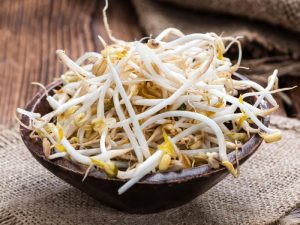 Why you should prefer them:
Why you should prefer them:
- They are easier to digest than the beans they come from.
- They have double the fiber of beans.
- They are a good source of vitamin C and folic acid.
You can consume them raw in salads or cook them. Just remember that the cooking process will destroy some of the vitamin C and folic acid they contain.
Nutritional value (per 100 grams):
Calories: 30.96
Protein: 3 gr
Fat: 0.1 gr
Carbs: 5.9 gr
Fiber: 1.8 gr
Sprouts from lentils
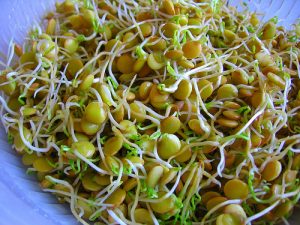 Why you should prefer them:
Why you should prefer them:
- They constitute a very rich source of protein (lentils have 26% and meat 28%).
- They contain a high quantity of vitamin C and folic acid.
- They are a very good source of plant fiber.
Sprouts from lentils are delicious in soup and can also be consumed with boiled vegetables.
Nutritional value (per 100 grams):
Calories: 105
Protein: 8.9 gr
Fat: 0.5 gr
Carbs: 16.2 gr
Fiber: 5.8 gr
Vitamin C: 15.5 mg
Folic acid: 100 mg
Sprouts from alfalfa
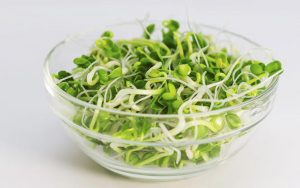 Why you should prefer them:
Why you should prefer them:
- Alfalfa sprouts are among the richest sources of saponins, which help in the reduction of “bad” cholesterol, without impacting the “good”.
- They have powerful antioxidant properties.
They are ideal for salads and sandwiches when consumed raw. If you decide to cook them, try adding them to your next omelet for best results.
Nutritional value (per 100 grams):
Calories: 29
Protein: 4 gr
Fat: 0.7 gr
Carbs: 3.8 gr
Fiber: 2.5 gr
Potassium: 79 mg
Phosphorus: 70 mg
Sprouts of broccoli
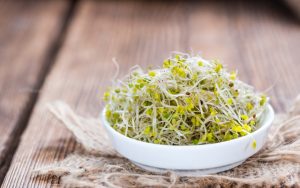 Why you should prefer them:
Why you should prefer them:
- They are rich in sulforafano, a substance that has been found to contain powerful anti-cancer properties.
- They also protect from cardiovascular disease.
Broccoli sprouts have a peppery flavor and are great for vegetables and salads.
Nutritional value (per 100 grams):
Calories: 43
Protein: 3.4 gr
Fat: 0.3 gr
Carbs: 8.95 gr
Fiber: 3.8 gr
Calcium: 42 mg
Potassium: 389 mg
Phosphorus: 69 mg
B-carotene: 450 mg
Vitamin C: 85 mg
Folic acid: 61 mg
Sprouts of wheat
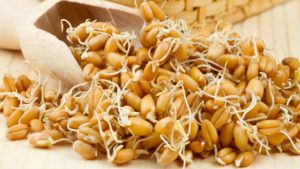 Why you should prefer them:
Why you should prefer them:
- They contain omega 6 fatty acids that are essential to your health. However, what makes them surpass other foods that also contain omega 6 fatty acids is their durability; they can keep for as long as one week, while omega 6 fatty acids from other sources (like cod liver oil) are sensitive, easily oxidized and destroyed.
- They have four times the quantity of vitamin B12 than wheat.
- They have three to four times more fiber than bread.
- Consuming 100 grams of wheat sprouts gives you roughly half your daily required magnesium intake.
Enjoy them raw or with boiled vegetables, in Asian dishes, soup, and seafood risotto.
Nutritional value (per 100 grams):
Calories: 198
Protein: 7,5 gr.
Fat: 1,3 gr.
Carbs: 42,5 gr.
Fiber: 1,1 gr.
Magnesium: 82 mg
Phosphorus: 200 mg
Selenium: 42,5 mg
How you “cultivate” sprouts
You will need:
- A glass container with a wide opening so that you can easily remove the sprouts when they have grown.
- A cheesecloth (cotton buckram used to make cheese).
- Use beans and lentils to grow their sprouts, but for the others use their seeds. Remember to buy organic so that you are not consuming added chemicals and pesticides.
“Culture” step by step
- Wash the beans, lentils or seeds that you have selected well.
- Place them in a glass container with water, covered with the cheesecloth and soak for six to eight hours.
- Next, empty the water, rinse and drain well.
- Put them back into the glass container and water two to three times daily.
- When your sprouts begin to grow, then you can use them. You should have sprouts in two to five days depending on the seed used. Do not leave them for more than seven days because their roots will grow a lot and they will acquire a bitter flavor.
How to maintain sprouts
It is best to eat them immediately after harvest. However, you can also keep them in a separate glass container in your fridge for up to four days.
Every bite either fights disease or causes it. Interested in learning how to use detox drinks and diets to shed excess weight and flush harmful toxins from your body? Check out whatdetox.com.


















